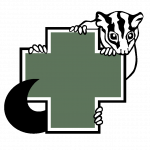RESCUE ADVICE
Kangaroos & Wallabies
Macropods are a family of marsupials that include kangaroos, wallaroos, wallabies, pademelons, rat-kangaroos, and potoroos. These species thrive across Australia in various habitats, but many remain endangered despite conservation efforts.
For example, the Parma Wallaby was once thought extinct until its rediscovery in the late 1960s, when it was found to be more common than previously believed.
Macropods are mainly active from late afternoon through early morning. During the day, especially in warmer seasons, they rest undercover or in the shade of trees. As herbivores, they primarily eat grass but also consume leaves, herbs, fruit, and flowers.
They breed year-round, except in extreme drought conditions. Newborn joeys, weighing about one gram, climb into their mother’s pouch using their well-developed forearms, where they attach to a teat. They remain in the pouch for 3 to 10 months, depending on the species. Once permanently evicted, they continue to suckle for about half the time they were in the pouch (e.g., pademelons for 3 months, grey kangaroos for 6–8 months).
Some species mate immediately after giving birth, while others wait until they have a young joey in the pouch. However, the embryo does not develop until about a month before the pouch young is permanently evicted. In many species, once the new joey is born, the older one is not allowed back into the pouch.
If you find an injured or sick echidna, please call our 24/7 Rescue Line on 0418 628 483. It is operated by volunteers at WIRES. They will alert our team and a trained rescuer will be out as soon as possible.
Rescue Advice
DO NOT attempt to feed any rescued animal—especially joeys. They require specialist milk formulas and may choke unless fed with specialised teats.
Macropods can be extremely dangerous, especially when stressed or injured. If you come across a macropod that is still standing, be cautious when approaching. Also, if it is safely off the road, do not attempt to move it back onto the road.
Call our 24/7 Rescue Line on 0418 628 483 immediately, and a rescuer will assist as soon as possible.
If the macropod is unable to stand and is still on the road, ensure your own safety before approaching. Be mindful of its powerful hind legs. If possible, cautiously pull it by the tail to move it off the road. If you have a towel or blanket, placing it over the animal’s head can help reduce its stress.
If you can stay in the area until a rescuer arrives, please keep an eye on the animal. Injured animals can move into deep grass or vegetation, making them difficult to find. If the animal is small and can be safely wrapped in a blanket, you may transport it to a vet. If you cannot wait for a rescuer, please mark the location with a cloth, shopping bag, or anything else tied to a nearby fence, tree, or post. Inform the rescue line of the marker and provide your phone number. You can also take a photo or get a GPS reading to assist with locating the animal.
- If you find a deceased female, check her pouch for a joey.
- If the joey is not attached to the teat and you cannot stay, place it in a pillowcase, beanie, or clean cloth to keep it warm and secure.
- If the joey is active inside the pillowcase, tie the top securely so it does not escape and injure itself. It can breathe inside the pillowcase.
- If a joey is hairless or has only short fur, DO NOT attempt to remove it from the teat—it can be injured. If the mother’s pouch is empty but appears large, a joey may have been thrown out from the impact. Listen carefully for a hissing or tutting sound nearby. If the joey is small enough to rescue safely, wrap it securely and keep it warm inside your T-shirt until you can hand it over to a rescuer.
- If the joey is well-furred and feels warm, place it securely in a pillowcase, tie the top to prevent escape, and wrap it in a jumper or blanket to keep warm until a rescuer arrives.
- If the joey is larger, DO NOT chase it. Instead, monitor its location until a rescuer arrives.
To provide warmth at home, use a hot water bottle or a plastic drink bottle filled with tap-hot water, wrapped in a towel. Place it next to, not under, the joey.
Macropods in the Hunter region
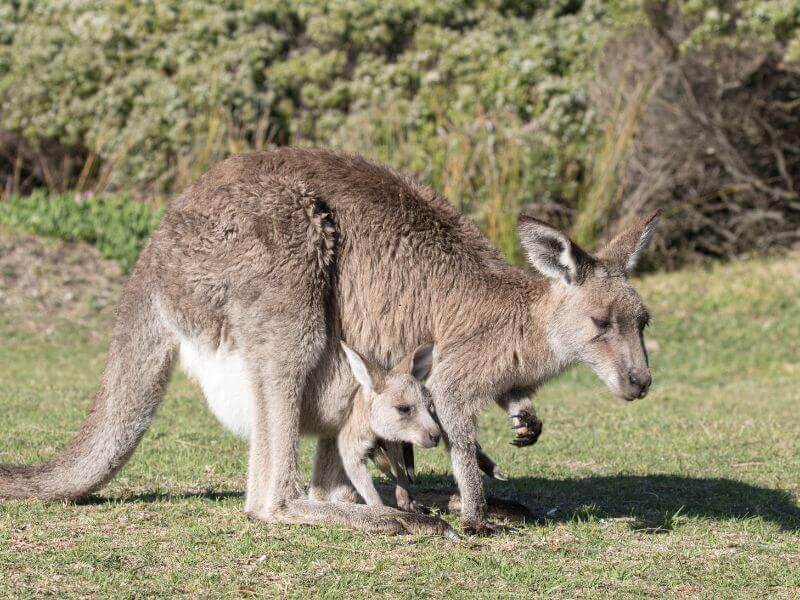
Kangaroos
Eastern Grey Kangaroos can be found grazing in open areas at dusk and dawn around the Hunter region, surrounded by large, multi-generational mobs within which they form undeniable family bonds. Orphaned ‘easties’ are known to be big sooks, remaining ‘babies’ until they’re well over 10kg. Eastern greys are particularly susceptible to stress related illness, so if you pick up a joey, keeping them in a warm, dark and quiet environment is often life-saving.
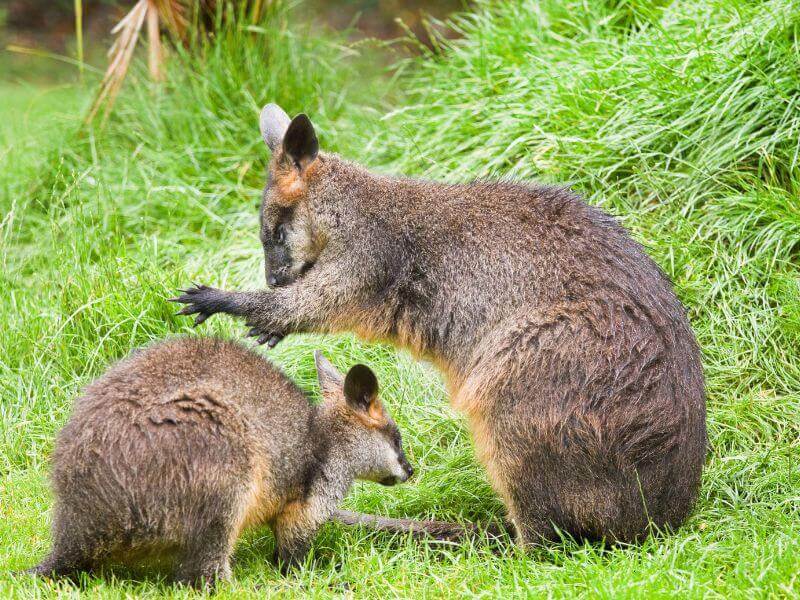
Red-Necked and Swamp Wallabies
We have Red-necked Wallabies and Swamp Wallabies in the Hunter Region. They are smaller than the Greys and Wallaroos. Swamp Wallabies are quite brown, usually solitary, and do not venture into open areas. They live in dense bushland and rainforest understorey and are fast and agile.
Red-necked Wallabies have greyish fur with reddish-brown shoulders. They live in more open forests in small groups and come out onto paddocks and open areas to feed from late afternoon through to early morning.
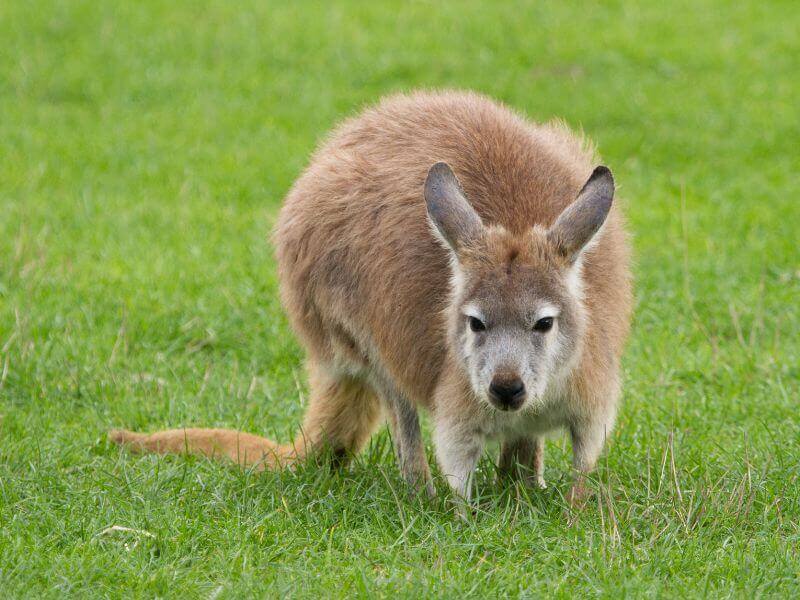
Common Wallaroo
Wallaroos resemble Eastern Grey Kangaroos but are stockier, with coarse, shaggy fur. To the trained eye, they are easily recognisable by their bare, black nose (rhinarium). While in care, they are often affectionately called “wallies” and are known for being expert escape artists and parkour enthusiasts.
Males are particularly muscular, with dark grey to almost black fur, while females have softer, light-grey fur. Wallaroos typically inhabit hilly, rocky areas but venture into open spaces to feed. Agile and strong, they have a well-earned reputation for evasion and high-speed manoeuvres.
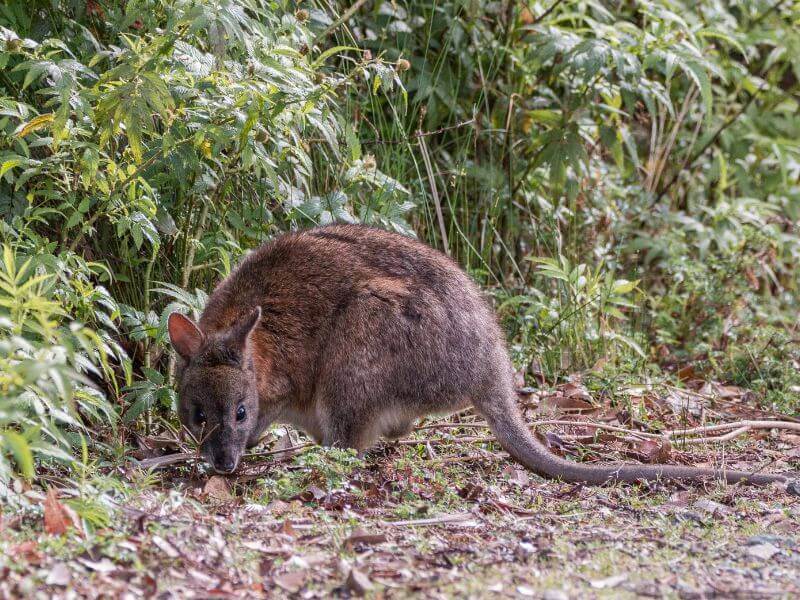
Red-necked and Red-Legged Pademelons & The Parma Wallaby
Pademelons are much smaller macropods—quite stumpy and only half the size of other wallabies. They are shy, solitary animals that live in dense forests, foraging at dusk and dawn on the forest edges, grazing on grasses and vegetation.
Locally, pademelons are found in low-lying rainforest areas, Watagan National Park, State Forest areas, and around Barrington Tops National Park, as well as in Cooranbong and Dungog. The Red-legged Pademelon and the Parma Wallaby do not often come into care as they live higher up in the escarpments of these parks.
Another rare rescue is the Brush-tailed Rock Wallaby, which lives in rocky escarpments of the above-mentioned national parks. It is a small, highly agile wallaby with a long tail and well-padded feet.
Living around Macropods
The most common reasons we are called for macropod rescues is they have been hit by a car, attacked by dogs and other pets and entangled in wire fencing. Some ways we can help improve their chances of staying safe:
- Never feed a wild animal. Kangaroos and wallabies have ample food sources and don’t need much water. Kangaroos and wallabies that are used to being fed can approach people expecting food. When there is no food, they may become aggressive.
- Slow down and be aware when you see a kangaroo road sign, particularly around dawn and dusk when they are most active.
- Keep dogs on a leash when walking through an area known to be inhabited by kangaroos or wallabies.
- Choose wildlife-friendly fencing. Avoid barbed wire and consider whether a row of native trees could suffice.
